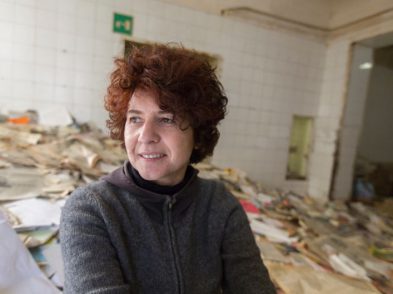Ask a visitor—or even a local—to identify the center of Florence and the answer might be piazza del Duomo. But Meri Iacchi, a native Florentine, knows that the official city center is via San Gallo. However, in recent decades, many store owners have relocated towards piazza del Duomo, where tourists spend their time and money. But Iacchi is working to rebuild a sense of community in via San Gallo.
According to Iacchi, a warm sense of community once defined via San Gallo. But since 1987, when she started working at a hardware shop on via San Gallo, she has watched the heart of Florence transition. Big-name shops edged in. Some San Gallo store owners were forced to relocate; many went out of business. Now, Iacchi observes, ‘Tourism is taking over Florence. Via San Gallo is the official city center, but now I think of piazza del Duomo as the center of the city,’ said Iacchi.
Rather than stand by, Iacchi decided to use art as a means to rekindle a sense of community. She started Qualcosa da dire (‘something to say’), a group of eight people, including Iacchi, who began to meet and create art. From that beginning, Iacchi hopes to encourage more locals to celebrate their city’s culture through expressive art. The group, which meets on Thursday evenings in via San Gallo 24r, actively welcomes new members.
In one of the group’s first projects, Iacchi invited each member to come up with an individual project. ‘I wanted to prove how contemporary art can affect society on a deep level. My goal was to close the distance between people, society and art.’ Some crafted, some drew and others took photographs. Renzo Janse photographed what he saw when he looked down and then suddenly looked up: ‘I wanted to show the contrast between what is beautiful and what is ugly. You look down; ugly. Look up; beauty. It was a metaphor for life,’ said Janse. Iacchi then created a handmade book of the projects. ‘We trusted her. Because of her, we began to believe in ourselves as artists,’ said Janse.
In addition to their individual art projects, the members of Qualcosa da dire work together on projects. Every week, for example, members of the group get together to knit, and at the moment, they are weaving blankets large enough to cover pillars of a building. In another project, the group is making hundreds of clay boats. Each of these projects amplifies the group’s presence as an active community within Florence. The various projects are displayed in various locations around Florence.
Iacchi’s own creativity seems boundless. She is currently producing a play about Anna Ligi, a woman who lived through the revolution of culture and the 1966 flood of the Arno River. While Iacchi was looking for a location for the clay boat workshops, she was inspired to embark on yet another project: after coming across several boxes of old newspapers and bags of letters in an abandoned house that had last belonged to a man who lived alone, Iacchi decided to use the found items to recreate the man’s life in art.
Asked why she works so tirelessly to connect—and reconnect—Florentines, Iacchi explains, ‘I believe that being enthusiastic about finding life can help you.’





